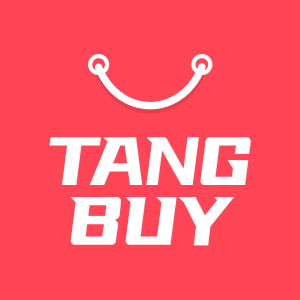How AI Can Help You Find Winning Products Without Guesswork

Have you ever felt unsure when selecting a new product, only for it to underperform? You are not alone. Almost 95 percent of new products fail each year. This occurs because individuals make poor choices and do not utilise sufficient data. Now, you can stop guessing products to choose. You can employ AI-powered tools that provide you with reliable insights. With intelligent strategies, dynamic maps, and collaboration with AI, even small businesses can thrive. You can make more informed decisions and expand your brand with confidence.
Key Takeaways
Do not guess when picking products. Use facts to help you choose.
If you only trust your gut, you might lose money. Always use facts to help you decide.
AI tools can look at what customers do. They can show which products will sell well.
Predictive analytics can guess what will be popular next. This helps you stay ahead in the market.
Use AI to study the market. It helps you know what customers want and find things that are missing.
Pick AI tools that work for your business. They can help you find better products.
Make your brand special with private labelling. This helps you stand out and keeps customers coming back.
Begin with easy AI tools. Add more as you get used to them in your work.
Stop Guessing Products
Why Guessing Fails
You might think you can spot a winning product just by trusting your gut. Many people do. But guessing often leads to disappointment. When you rely on assumptions, you risk missing what customers truly want. You can waste time and money on products that never take off.
Did you know? A study of nearly 9,000 new products found that only 40% stayed on shelves after three years. Most did not fail because they lacked value. Customers simply did not see their worth.
Here are some common reasons why guessing fails in product selection:
You make investment decisions based on hunches, which can lead to financial losses.
You might misunderstand what users need, so you create products that do not solve real problems.
You assume you know your target market, but your marketing misses the mark and limits your reach.
When you Stop Guessing Products, you avoid these pitfalls. You start to see patterns and trends that your intuition might miss. You can focus your efforts on products that have a real chance to succeed.
Risks of Intuition
Trusting your intuition feels natural. You might believe your experience gives you an edge. But even experts make mistakes when they ignore data. Intuition can lead to marketing missteps and wasted resources. You might launch a product that nobody wants, or you might overlook a hidden gem.
Let’s look at what happens when you rely only on your gut:
You let personal biases shape your choices, which can cloud your judgement.
You miss out on valuable feedback from real users and market trends.
You risk making costly mistakes that could have been avoided with a data-driven approach.
Data-driven teams are almost three times more likely to launch successful products than those who rely on guesswork. When you Stop Guessing Products, you replace assumptions with facts. You make decisions based on user behaviour, feedback, and real market data. This approach helps you avoid common mistakes and gives you a better chance of finding products that truly win.
Tip: If you want to Stop Guessing Products, start by looking at the numbers. Let data guide your choices, and you will see better results.
AI and Data

Data-Driven Choices
You want to choose products that will sell well. You do not want to just hope for good results. Using data helps you make better choices. You do not have to guess. You can use facts and numbers to help you decide. AI tools gather information from what customers do, what they buy, and what is popular. This lets you see what people really buy, not just what you think they want.
Look at how using data is different from guessing:
Aspect | Data-Driven Methods | Traditional Guesswork |
|---|---|---|
Accuracy | High, based on specific data points | Low, based on broad trends and intuition |
Profitability | Improved margins due to targeted assortments | Often generic assortments, lower margins |
Stock Management | Reduced stockouts and improved sell-through | Higher risk of stockouts |
You get better results when you use data. You can find patterns in customer reviews. You can see which products are strong or weak. You can also compare items to spot gaps in the market. This helps you pick products that are different from others.
Here are some ways data-driven choices help you:
You use what customers do and buy to make better product lists.
You have fewer times when you run out of stock.
You match your products to what customers like, so you earn more.
If you want to Stop Guessing Products, start by looking at the right data. The best data for online shops includes product names, SKUs, prices, images, brands, barcodes, descriptions, and if the product is in stock. You also need to know the weight, size, and how each product is sold. When you have all this information, you can make smarter choices.
Predictive Insights
AI does more than just show you what happened before. It can also guess what will happen next. Predictive analytics uses old and new data to guess future trends and what customers will do. You can see which products might become popular before others do.
Here is how predictive insights help you:
AI checks old sales and what people bought to find future trends.
You get special product ideas based on what customers bought before.
Marketing messages become more personal, so more people pay attention and buy.
When you use predictive analytics, you can guess what customers will want. This helps you pick the right products and manage your stock better. You avoid running out of products and keep your customers happy. You also make better choices about marketing and supply.
If you want to do well in e-commerce, predictive insights are very useful. You do not have to trust luck or just guess. You can use AI to make choices that are smart and help you earn more.
Tip: Let AI do the hard work. Use predictive analytics to guess what people will want and plan your products. You will save time and money, and your customers will be pleased.
AI Methods

Market Analysis
You want to know what is happening in your market. AI makes this easy. You do not have to read hundreds of reports or guess what your competitors are doing. AI tools can scan huge amounts of data and show you the big picture. You get clear answers about market size, customer needs, and gaps you can fill.
Here is a table showing popular AI methods for market analysis:
AI Method | Description |
|---|---|
Perplexity | Helps you measure market size and analyse categories like TAM, SAM, and SOM. |
NotebookLM | Reads research documents and finds patterns. |
Dovetail | Collects data from reviews, support tickets, and interviews to spot themes. |
Speak AI | Checks customer interviews for mood and common topics. |
Market Insights AI | Gathers and analyses market data automatically. |
ChatGPT | Answers market research questions using natural language. |
You can use these tools to find out what customers want and what your competitors offer. You can also try SWOT analysis to see strengths and weaknesses, or market gap analysis to spot unmet needs. AI helps you make smart choices without spending hours on research.
Tip: Use AI to compare products and spot gaps in the market. You will find new opportunities faster.
Trend Detection
Spotting trends early gives you an edge. AI can find new patterns in huge datasets that you might miss. You do not have to wait for a trend to become obvious. AI tools like Pressmaster.ai scan over 500,000 sources every day. They pick up small signals and show you what is about to become popular.
AI-driven trend detection works much faster than manual methods. You get alerts about new products, styles, or customer interests before others do. This means you can invest in the right products and react quickly. You do not have to rely on luck or slow research.
Note: AI can help you spot trends before they go mainstream. You can act early and stay ahead of your competitors.
Consumer Patterns
Understanding how people shop is key to finding winning products. AI looks at what customers buy, what they click, and what they review. You get a clear picture of what drives their choices. Amazon uses AI recommendations to boost sales by up to 35%. Sephora saw customer engagement jump by 200% and conversions rise by 35% after using AI.
Here are some ways AI helps you understand consumer patterns:
AI recommendations make shopping personal and increase sales.
You can see which products get the most clicks and reviews.
AI finds patterns in customer feedback, so you know what matters most.
AI systems can reach accuracy rates above 98%. They use purchase data, clickstream data, and reviews to give you insights. Some advanced models, like SMO-DNN, make predictions even more precise. You can use these insights to choose products that match what your customers want.
Tip: Let AI show you what your customers love. You will make better product choices and keep shoppers coming back.
Tools and Prompts
AI Tools Overview
You have many choices when it comes to AI tools for product discovery. Some tools help you find products that sell well. Others give you smart recommendations or help you personalise your shop. Here are three top options you can use:
Algolia Recommend: This tool works best if you want fast and personalised product carousels. It uses real-time signals from your shop and has ready-made models for recommendations.
Digioh: If you want to create shoppable quizzes or forms, Digioh lets you customise everything. You can target users based on their behaviour, device, or even what’s in their cart.
Amazon Rufus: This tool is perfect if you work with Amazon. It uses natural language and reviews to help you find products and understand what shoppers want.
Here’s a quick comparison:
Tool | Best For | Key Strength |
|---|---|---|
Algolia Recommend | Fast, scalable, personalised recommendations | Real-time signals, prebuilt models |
Digioh | Custom quizzes and onsite personalisation | Deep customisation, behavioural targeting |
Amazon Rufus | Amazon marketplace product discovery | Natural language, review data analysis |
Tip: Try different tools to see which fits your shop best. You might find that combining two tools gives you even better results.
Using Prompts
You can make AI tools smarter by using prompts. Prompts are short instructions or questions you give to the AI. When you write clear prompts, you get better answers and fewer mistakes. For example, you can ask, “Show me trending products for teens in sportswear,” and the AI will search for exactly that.
Here’s how prompts help you:
Benefit | Description |
|---|---|
Enhanced accuracy and relevance | Prompts help AI understand what you want, so you get precise results. |
Improved efficiency | Good prompts save you time because you don’t need to fix errors. |
Personalised experiences | You can tailor prompts to match your brand and customer needs. |
Greater control and consistency | Prompts keep your content on-brand and high quality. |
Note: Start simple. Use clear language and be specific. The more details you give, the better the AI can help you.
Here’s a sample prompt you can use:
Find top-rated kitchen gadgets for under £30 with at least 100 positive reviews.
Try changing the details to match your niche. You’ll see how quickly AI finds products that fit your needs.
Workflow Integration
You can add AI tools to your daily work without much trouble. Start by choosing tools that are easy to use and work well with your current systems. Clean up your data so the AI can read it easily. Automate your data pipelines to save time and get real-time results.
Here are some steps you can follow:
Choose tools that offer predictive analytics and can grow with your business.
Prepare your data. Make sure it’s clean and organised.
Use AI to automate data tasks and speed up your research.
Work with AI, but trust your own judgement too. AI gives you insights, but you make the final call.
Keep your data safe and check for bias in your AI models.
Tip: Mix AI insights with your own experience. You’ll make smarter choices and build a stronger business.
Success Stories

E-commerce Example
You may wonder how big brands use AI to find top products. Many large online shops use smart tools to help people find new things. These tools make shopping easier and more fun for everyone. AI changes how people find products every day.
Here is how some famous platforms use AI for product discovery:
Example | Description |
|---|---|
Pinterest Lens | Handles 600 million visual searches each month, helping users find similar products. |
ASOS Style Match | Helps shoppers find matching fashion items using image recognition. |
Wayfair | Lets people find furniture and home decor by searching with pictures. |
Target | Finds products from photos customers upload, making shopping better. |
You can take a photo of something you like, and Pinterest Lens will show you similar things. ASOS Style Match helps you find clothes that fit your style. Wayfair lets you look for furniture and decor with images. Target uses your photos to find products, so shopping is easier.
These brands use AI to make shopping fast and personal. You get better suggestions and find what you want quickly. You do not need to scroll for hours or guess which item is right. AI does the hard work for you.
Small Business Case
You do not have to be a big brand to use AI. Small businesses use smart tools to pick better products and sell more. You can see good results even if you run a small shop or local business.
Here are some ways small businesses use AI:
AI tools score leads with real-time data. You focus on customers who are most likely to buy.
AI sales playbooks suggest the best next steps based on what your customers do. You can improve your sales process.
"AI can look at data better than you can to guess buyer interest, helping small businesses find and qualify leads more easily."
JustUs uses AI to find ingredients and build equipment. This helps them save money and manage production. Jackie’s Jams uses AI for social media ads. They save time and get more done, which means more sales.
Across the country, small businesses using AI see 50% more qualified leads. You can also get 20-30% higher conversion rates. These numbers show that AI really helps.
You can use AI to learn what your customers want, improve your marketing, and grow your business. You do not have to guess or hope for the best. AI gives you the tools to do well, no matter your size.
Action Steps

Assess Process
Before you start using AI, look at how you pick products now. Make sure AI matches your business goals and gives real value. Set clear goals that connect to your business results, not just tech stuff. Check if your current technology can work with new AI tools. Find places where AI could help a lot. Think about how you could use AI by looking at your main numbers and the data you have. Compare the costs and benefits to choose the best projects.
Here’s a simple table to help you check your process:
Step | Description |
|---|---|
1 | Match AI plans with business goals to get real value. |
2 | Set success goals that link to business results, not just tech. |
3 | Check if AI tools work with your current technology. |
4 | Find business problems where AI can help by looking at what you do now. |
5 | Think of ways to use AI based on your main numbers and data. |
6 | Look at costs and benefits to pick the best AI projects. |
Did you know? Almost 9 out of 10 leaders say good data and AI rules help with new ideas, but less than half of companies have strong value-focused goals.
Choose Tools
Choosing the right AI tools is very important. You want tools that help you see market trends and what customers do. Pick tools that collect feedback from users, so you know what people think. Choose platforms that help you sort and rate product ideas. Make sure your tool works well with your current software, so you do not waste time fixing things. Always check the price and look for hidden costs.
Here’s what to look for when picking your AI tools:
Data analytics for market and user insights
User feedback collection to help with product choices
Features to manage and sort ideas
Works with your current systems
Price that fits your budget and gives good value
Tip: Try a demo or free trial first. You will see if the tool is right for you.
Apply Insights
Now you can use AI insights to help pick products. AI gives you real-time data, so you do not have to guess. You can spot patterns and guess what customers will want next. Listen to what people say on social media to change your products and marketing. ProdPad helps you turn feedback into actions, while Maze makes research faster and less biased.
Here’s how you can use AI insights:
Use AI to look at data and guess less
Change your plan based on trends and what customers do
Change your products and messages by listening to what people say online
45% of business leaders say predictive analytics is the best AI tool for marketing. Companies using AI for personalisation see sales grow by 6-10%, which is two to three times more than those who do not.
You do not need to be a tech expert. Start small, learn as you go, and let AI help you choose. You will find winning products faster and keep your customers happy. 🚀
Private Labelling
Brand Building
You want your brand to stand out. Private labelling gives you the power to create products that show your style and values. You do not just sell someone else’s goods. You build your own brand from the ground up. This control means you can change your products quickly when customers ask for something new. You can test ideas without spending a lot of money. If a product does well, you can make more. If it does not, you can stop and try something else.
Private labelling helps you grow your business. You can scale up when demand rises. You do not need to worry about big investments or slow changes. You can adjust your production and keep your brand fresh. Customers notice when you offer something unique. They trust brands that look professional and care about quality.
Here are some ways private labelling helps you:
You control how your products look and feel.
You can change your products to match trends.
You build a brand that people remember.
You test new ideas without risking too much money.
You become known for quality and authenticity.
Let’s look at the benefits for online sellers:
Benefit | Description |
|---|---|
You set your own style and prices. | |
Less Competition, Higher Profitability | You avoid fighting with big brands and find your own market. |
Amazon’s Support of Private Label Sellers | Amazon helps you protect your brand and grow your shop. |
Smartening Up Product Development with Data | You use tools to pick the best products and improve your marketing. |
Emphasis on Consumer Trends | You follow what customers want, like eco-friendly products. |
Little Up-Front Investment Starting | You start small and grow as you learn. |
Global Expansion Opportunities | You reach customers around the world with Amazon’s help. |
Tip: Private labelling lets you build a brand that stands out. You can grow your business and earn loyal customers.

Tangbuy Advantage
Tangbuy makes private labelling simple and powerful. You get full control over your brand. You can customise almost everything. Tangbuy helps you design logos, pick packaging, and even add thank-you cards. These small touches make customers feel special and build trust.
Here’s a quick look at how Tangbuy compares to standard dropshipping:
Feature | Standard Dropshipping | Private Labelling with Tangbuy |
|---|---|---|
Branding | No | Yes |
Customisation | Limited | Full |
Customer Loyalty | Low | High |
Market Position | Generic | Unique |
Tangbuy offers many customisation options:
Branded packaging makes your products look professional.
Thank-you cards show customers you care.
Product customisation helps you stand out from other sellers.
Quality checks make sure your products are always good.
Factory comparisons help you choose the best supplier.
Transparent inventory management lets you see your stock at any time.
When customers open a box with your logo and a thank-you card, they remember you. They feel confident buying from you again. Tangbuy’s support helps you build a brand that people trust. You get advice on marketing and tips for student sellers. You do not just sell products. You create an experience that keeps customers coming back.
Note: Customisation builds trust. Tangbuy helps you make every order special, so your brand grows stronger every day.
You can Stop Guessing Products and start making smarter choices with AI. AI checks supplier data, scans trade registries, and flags risks, so you pick reliable partners. If you want to adopt AI, try these steps:
Run design thinking workshops.
Build a discovery roadmap.
Collect feedback and improve.
AI tools help you adjust prices, manage stock, and track orders. Tangbuy’s private labelling lets you stand out and build trust. Explore these solutions today and give your business a boost! 🚀
FAQ
What is AI product discovery?
AI product discovery means using smart computer tools to help you find products that will sell well. You do not have to guess. AI looks at data and shows you what people want.
Can small businesses use AI tools?
Yes, you can! Many AI tools work for shops of any size. You do not need a big budget. Start with free trials or simple tools to see how they help your business.
How do I start using AI for product selection?
Begin by picking one easy tool. Clean up your product data. Try asking the AI simple questions, like “What are the top-selling items this month?” Watch how the results help you.
Will AI replace my own judgement?
No, AI gives you helpful insights, but you still make the final choice. Think of AI as your smart assistant. You use its advice, but your experience matters too.
What data do I need for AI to work well?
You need clear product names, prices, stock levels, and customer reviews. The more accurate your data, the better the AI can help you. Keep your information up to date.
Is private labelling with Tangbuy hard?
Not at all! Tangbuy guides you step by step. You pick your product, add your brand, and choose packaging. Tangbuy handles the rest, so you can focus on growing your shop.
How can AI help me spot trends early?
AI scans lots of websites, reviews, and sales data. It finds new patterns before most people notice them. You get alerts about rising products, so you can act fast and stay ahead.
Do I need to know coding to use AI tools?
No coding needed! Most AI tools have easy dashboards. You click, type your question, and get answers. If you ever get stuck, many tools offer help or tutorials.

TangBuy: A Smarter Way to Dropship in 2025
If you're looking to stay competitive with dropshipping in 2025, speed and trend-awareness are key. TangBuy helps you stay ahead with real-time product trends, fast fulfilment, and factory-direct sourcing. With over 1 million ready-to-ship items, 24-hour order processing, and seamless Shopify integration, TangBuy makes it easier to test, scale, and succeed in today's fast-moving eCommerce landscape.
See Also
Ways to Spot Profitable Wholesale Items for Your Enterprise
Five Innovative Approaches to Find Popular Products Online
Affordable High Margin Items for Your Shop in 2025
Fifteen Budget-Friendly Items with Great Profit Potential for 2025
Twenty-Five Affordable High Yield Products to Enhance Your Store in 2025

